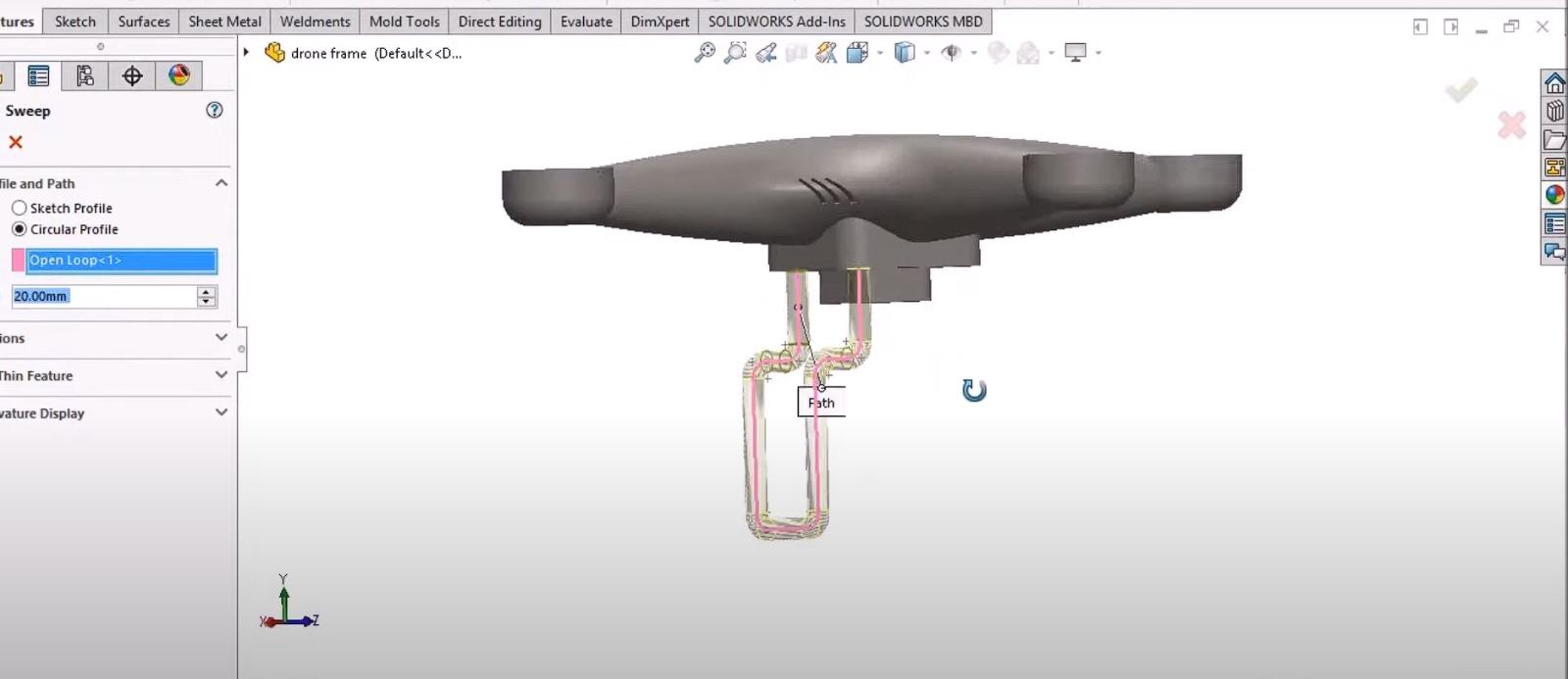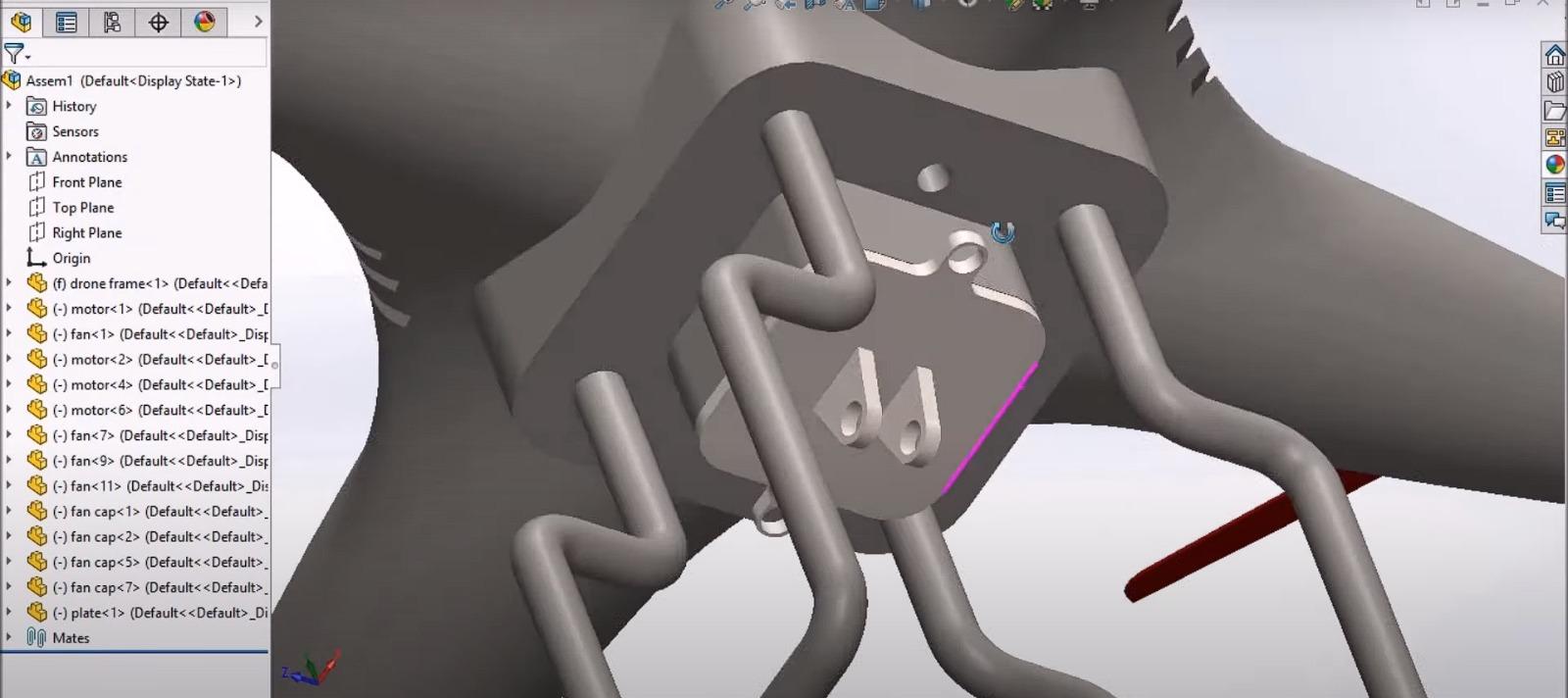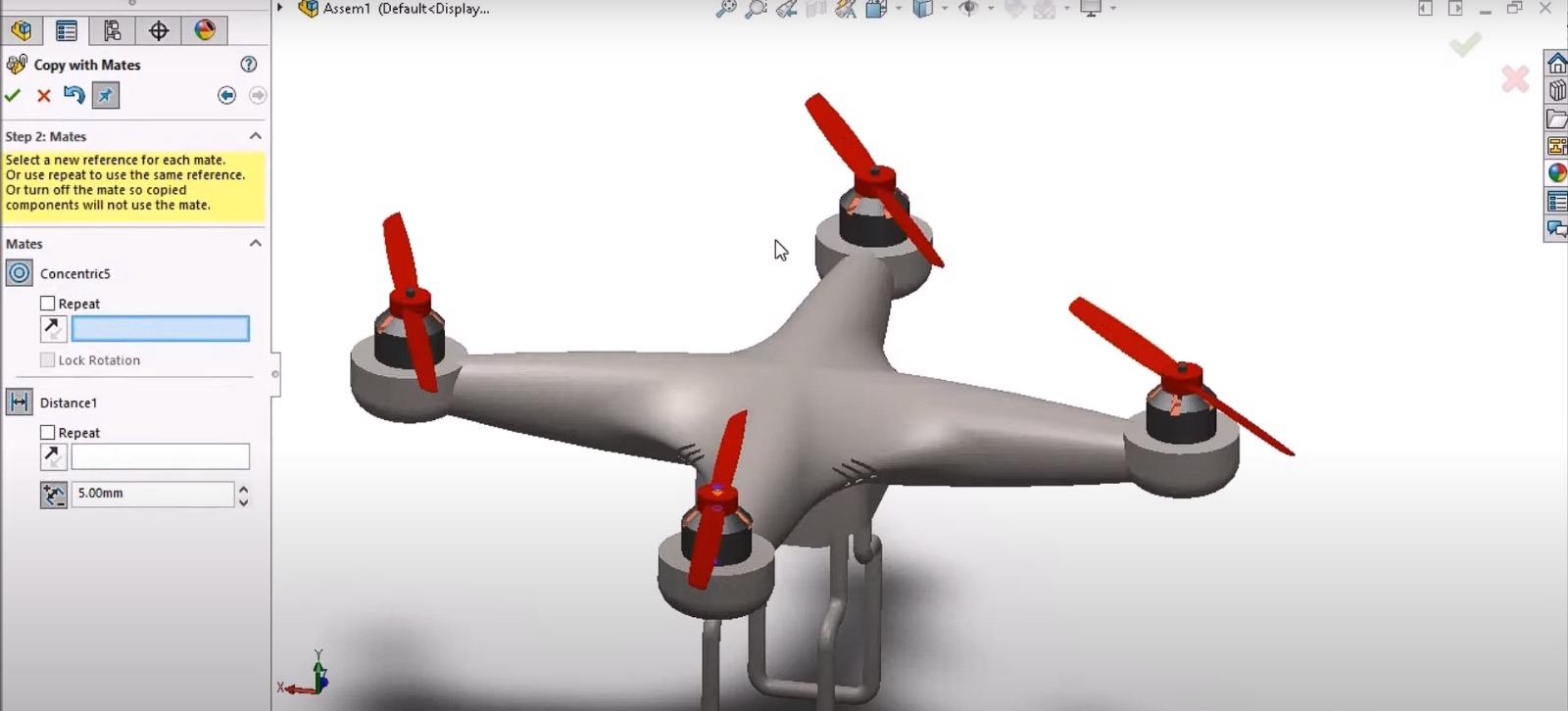PROJECT SOLIDWORK DRONE UMP
by farhanrugby05 in Teachers > University+
1623 Views, 0 Favorites, 0 Comments
PROJECT SOLIDWORK DRONE UMP


Assalamualaikum and hello everyone , we are diploma student Faculty of Mechanical & Automotive Engineering Technology from Universiti Malaysia Pahang Al-Sultan Abdullah (UMPSA). Today we will give you guys a tutorial on how to make a drone in solidwork. This is our group project assignment which is from course DRM1113 Engineering Drawing & CAD . My group consists of 4 people, the members are
- WAN MUHAMMAD AMIN BIN WAN ABDUL AZIZ (RM23131)
- AMIRUL FARHAN BIN MOHD KHAIRUMI (RM23137)
- AHMAD HAKIMI BIN RASIDI (RM23234)
- MUHAMMAD NUUR IRSYAD BIN MOHD AMRAM (RM23200)
In the rapidly evolving landscape of unmanned aerial vehicles (UAVs), the integration of advanced design and simulation tools has become paramount to achieving optimal performance and efficiency. Our group project, titled "Design and Simulation of a Drone using SolidWorks," delves into the intricacies of creating a cutting-edge drone using SolidWorks, a leading 3D computer-aided design (CAD) software.
Drones have emerged as versatile tools with applications ranging from surveillance and reconnaissance to aerial photography and data collection. The success of a drone hinges on its design, aerodynamics, and structural integrity, all of which can be meticulously crafted and analyzed using SolidWorks.
This project aims to showcase the comprehensive capabilities of SolidWorks in designing a functional and efficient drone. We will explore various aspects of the design process, including conceptualization, detailed modeling, assembly, and simulation. Through SolidWorks, we can simulate real-world conditions, allowing us to analyze the drone's performance, stability, and responsiveness.
The project will not only emphasize the technical aspects of drone design but also highlight the collaborative nature of engineering projects. Our team will work cohesively to bring together diverse skills in mechanical design, aerodynamics, and systems integration. Each team member will contribute their expertise to create a holistic and well-optimized drone design.
As we progress through the project, we will encounter challenges and make informed design decisions, reflecting the iterative nature of engineering. By the end of the project, we aim to present a fully realized drone model, accompanied by a thorough analysis of its performance under various conditions.
Join us on this journey through the realms of SolidWorks as we navigate the intricacies of drone design and simulation, pushing the boundaries of what is achievable in the realm of unmanned aerial vehicles.
Supplies

To successfully embark on our SolidWorks drone project, we'll require a range of supplies, including but not limited to: drone motors, propellers, a flight controller, electronic speed controllers (ESCs), a power distribution board, lithium polymer (LiPo) batteries, a frame kit, various sensors (such as gyroscopes and accelerometers), and a compatible camera module. Additionally, access to SolidWorks software for detailed 3D modeling and simulation will be essential for the design and analysis phases of our project.
Sketch and Design the Drone Body

Sketch and Design the Drone Body:
Start by creating a new SolidWorks part file.
Sketch the outline of the drone body using the appropriate tools and dimensions.
Extrude the sketch to create a solid body.
Add fillets and chamfers to smooth out the edges.
Design the Propellers


Design the Propellers:
Create a new part file for the propellers.
Sketch the shape of the propeller blades.
Extrude the sketch to create a solid propeller.
Add fillets and chamfers to the edges of the propeller.
Design the Landing Gear


Design the Landing Gear:
Create a new part file for the landing gear.
Sketch the shape of the landing gear legs.
Extrude the sketch to create solid legs.
Add fillets and chamfers to the edges of the landing gear legs.
Assemble the Drone Components


Assemble the Drone Components:
Create a new SolidWorks assembly file.
Insert the drone body, propellers, and landing gear components into the assembly.
Position and orient the components correctly.
Mate the components together using appropriate constraints.
Add Additional Details and Features





Add Additional Details and Features:
Add details such as motors, batteries, and electronic components to the drone model.
Create decals or graphics for the drone body.
Simulate the movement of the propellers and landing gear.
Render and Generate Drawings


Render and Generate Drawings:
Render the drone model to create realistic images.
Generate engineering drawings of the drone, including assembly drawings and detailed views.
CONCLUSION
In conclusion, our SolidWorks drone project has been a journey of innovation, collaboration, and hands-on learning. As we reflect on the entire process, we extend our heartfelt appreciation to our dedicated lecturer, Dr. Daing Mohamad Nafiz Bin Daing Idris. His guidance, expertise, and unwavering support were instrumental in steering us through the intricacies of drone design and SolidWorks modeling.
We are also profoundly grateful to our friends and fellow group members who contributed their unique skills and perspectives to make this project a success. The collaborative spirit within our team fostered an environment where ideas flourished, challenges were overcome, and each member played a crucial role in the project's development.
The SolidWorks drone project not only enriched our technical knowledge but also emphasized the importance of teamwork and effective communication in engineering endeavors. As we celebrate the completion of this project, we look forward to applying the skills and insights gained to future endeavors in the realm of unmanned aerial vehicles.
Our sincerest thanks to Dr. Daing Mohamad Nafiz Bin Daing Idris and our friends for their invaluable contributions to the success of this project. This experience has been a testament to the power of collaboration and mentorship, shaping us into more adept and confident engineers as we move forward in our academic and professional journeys